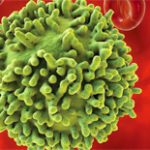Taken together, the investigators propose a model by which Treg cells promote muscle repair in three ways. First, Treg cells regulate the myeloid populations that infiltrate the damaged tissue. Second, Treg cells upregulate conventional T cell populations that also infiltrate the damaged muscle. Last, Treg cells affect the activities of muscle lineage cells.
When the investigators examined the role of Treg cells in a dystrophy model, they found treatments that increased or decreased Treg activity also diminished or enhanced (respectively) muscle repair.
The results from the extensive study point to new therapeutic opportunities for wound repair and muscular dystrophies and suggest that an improved understanding of how and why Treg cells accumulate in muscle may help future patients. (posted 5/30/14)
Lara C. Pullen, PhD, is a medical writer based in the Chicago area.
Reference
1. Burzyn D, Kuswanto W, Kolodin D, et al. A special population of regulatory T cells potentiates muscle repair. Cell. 2013 Dec;155(6):1282–1295.
